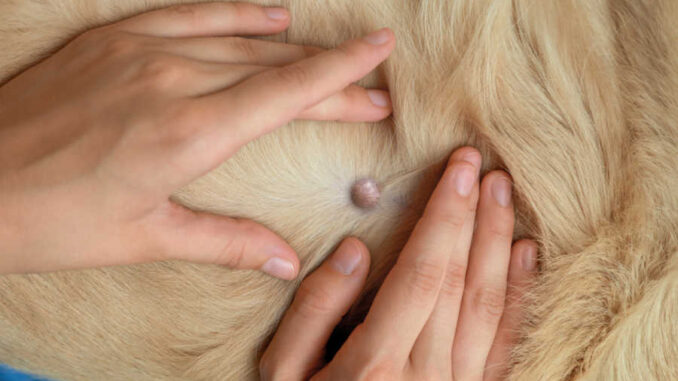
This article was updated on June 22nd, 2024

When an owner comes to my clinic because they are worried about a new growth or mole on their dog, the question on everyone’s lips is, “What is it?”.
Technically, a mole is a nevus. This is a benign skin growth that is usually small and quite symmetrical. As mentioned, other types of lesions such as a cyst, skin tag or wart may also be referred to as ‘moles’ by some people. Let’s take a look at some of the more common types.
“Most of the time, new moles or warts will be something we monitor. Less often, your veterinarian may discuss sampling or removal of the lump, particularly if they are concerned about cancerous tumors”
Dr. Linda Simon, Veterinarian
Most common types of moles on dogs (with pictures)
• Skin Tags
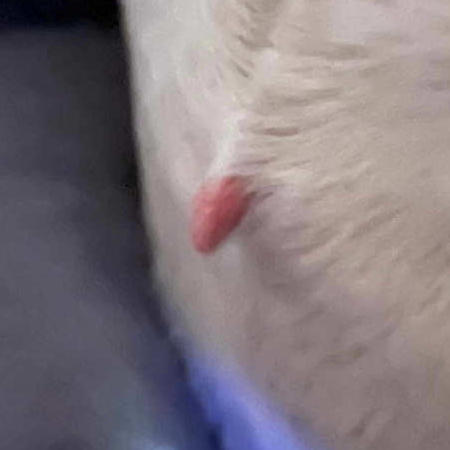
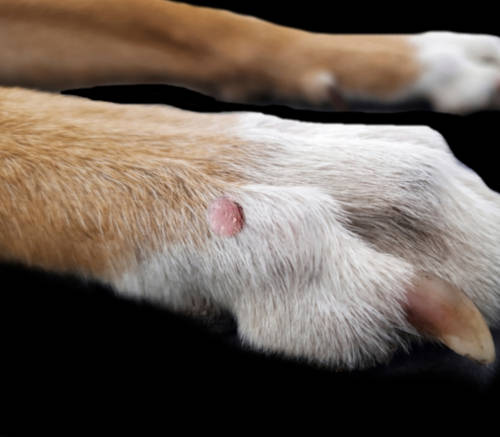
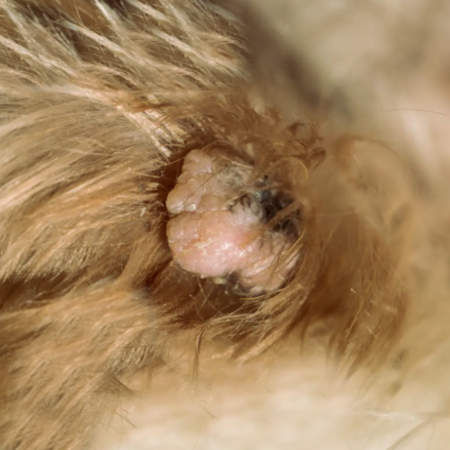
In older dogs especially, skin tags start to appear. They are small, soft, and often dangle from the skin. They may be dark or a fleshy pink color. We often see them on the face, elbows, armpits, and ankles. They are slow-growing and should not bother the dog.
Generally, we would monitor skin tags but would not remove them unless they were becoming a nuisance.
Learn more about Skin Tags.
• Cysts
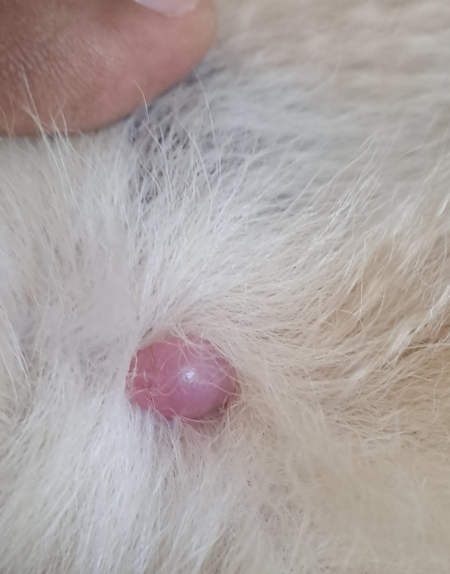
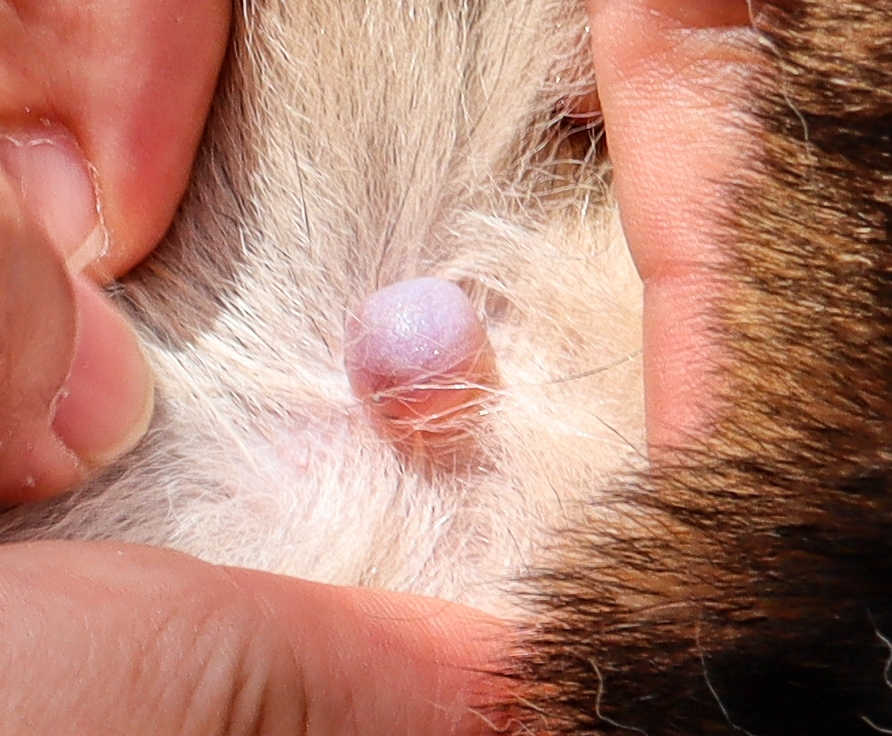
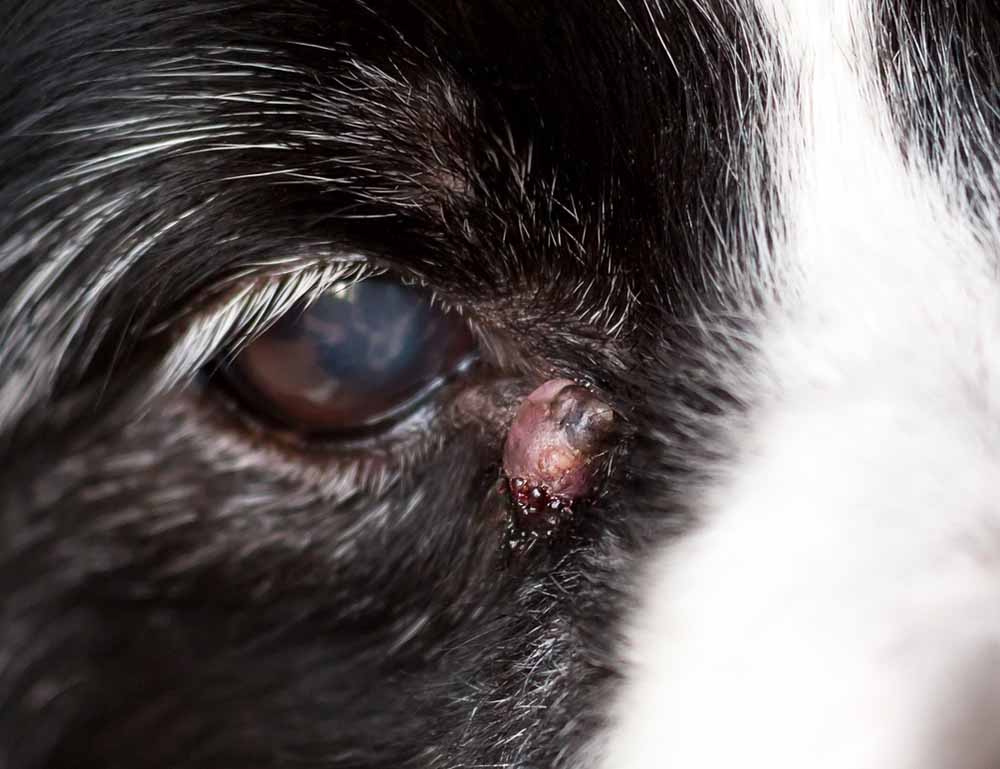
Dogs develop all kinds of cysts, some of which are fluid-filled and others that contain a thicker substance that resembles cottage cheese. Cysts typically appear as small, round, or oval-shaped lumps, often with a smooth surface.
Canine cysts can appear anywhere on the body and may grow to a substantial size. However, most cysts remain quite small. If a cyst is drained or ruptures, it will refill quickly. While cysts usually do not need to be removed, removing one involves a surgical procedure to extract the cyst wall.
Learn more about Cysts in Dogs.
• Warts or sebaceous adenomas
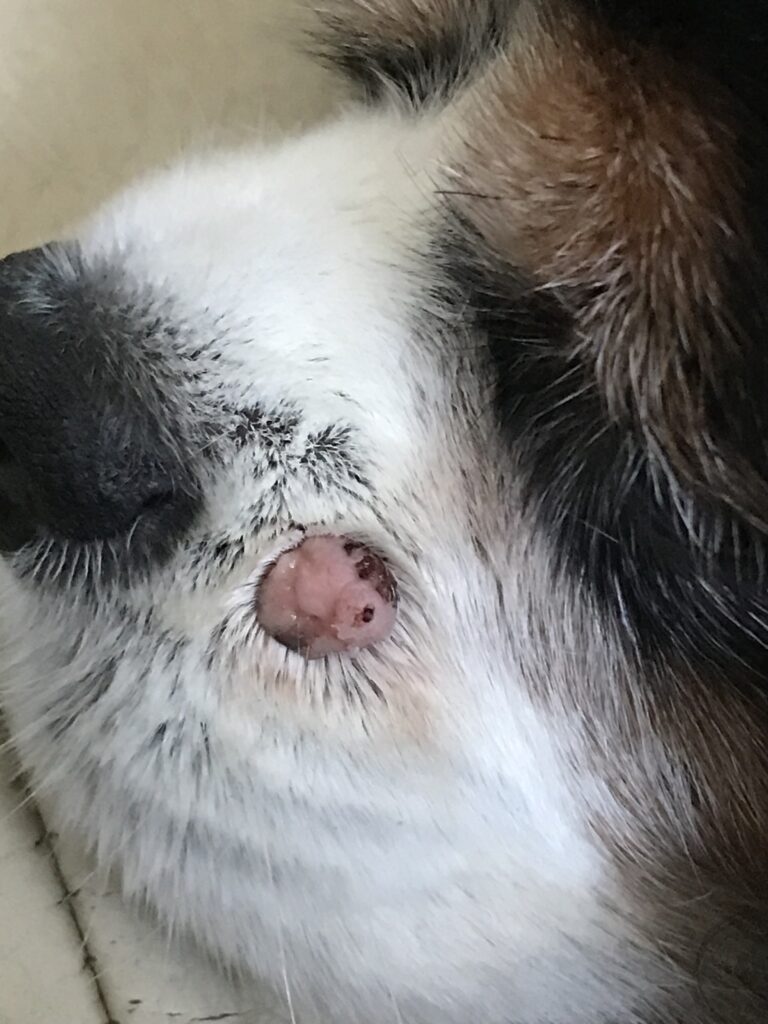

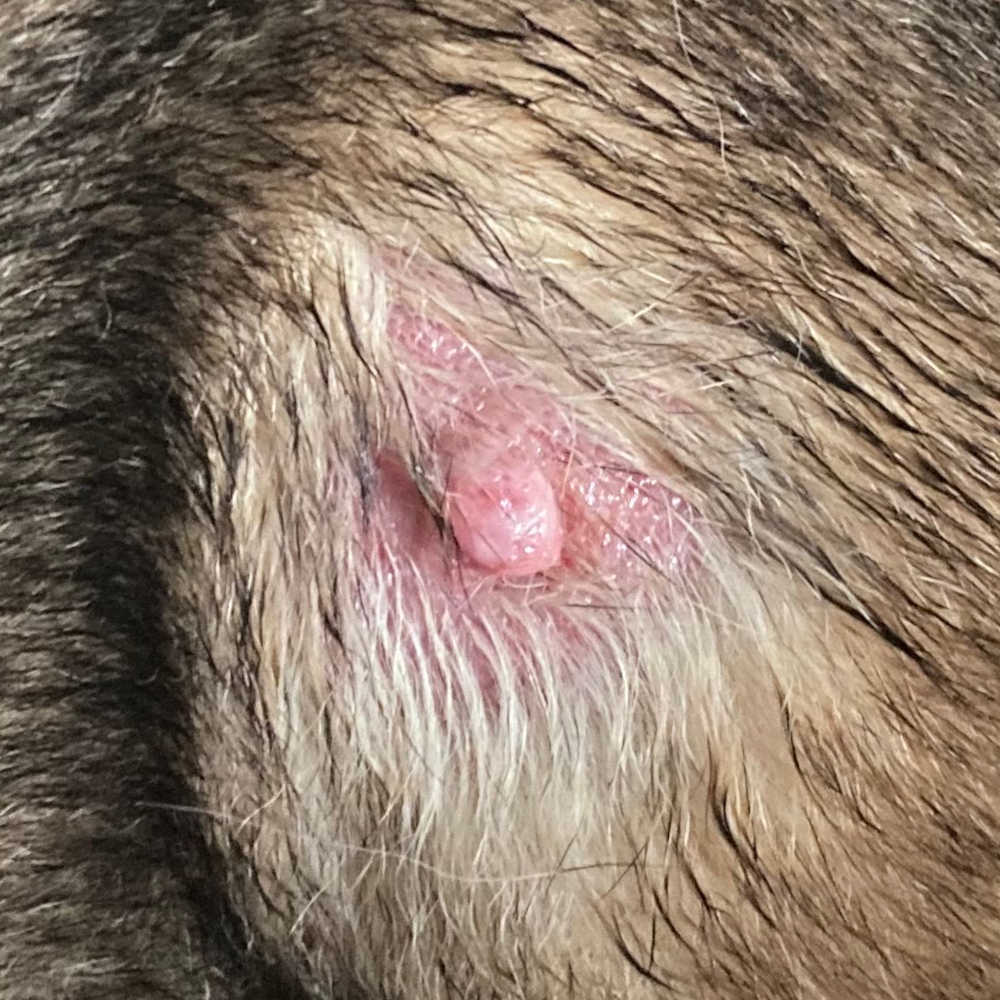
Warts tend to be light pink and can resemble small cauliflowers or brains. We tend to see warts in two dog populations: puppies and seniors. This is because both of these age groups struggle to fight off infections and warts are spread by a virus. For younger dogs, warts usually resolve within a few months. For older dogs, they may persist and grow slowly over time.
Warts on dogs can either show up as one raised bump or a bunch of small rough bumps, as shown on the picture below:
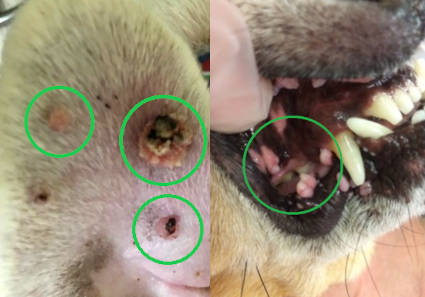
Learn more about Warts in Dogs with pictures and veterinarian info.
• Cancer
Cancerous moles or lumps come in all shapes and sizes, as shown in the pictures below.
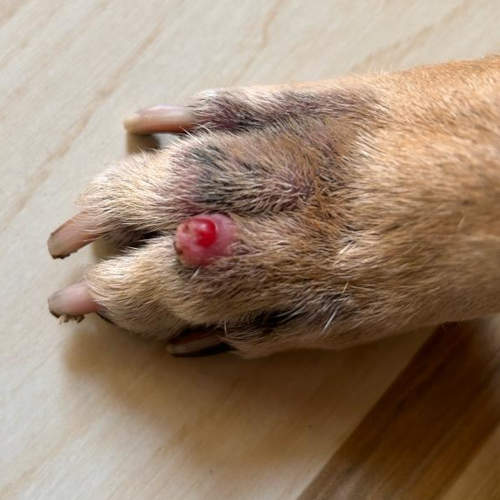
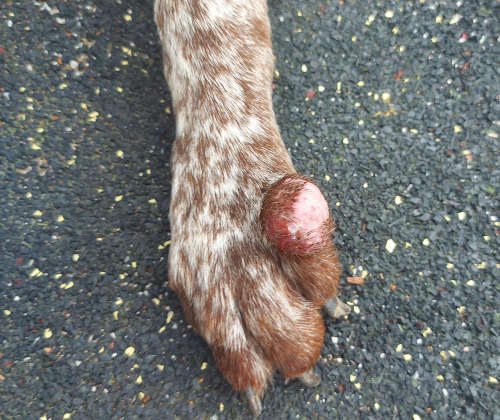
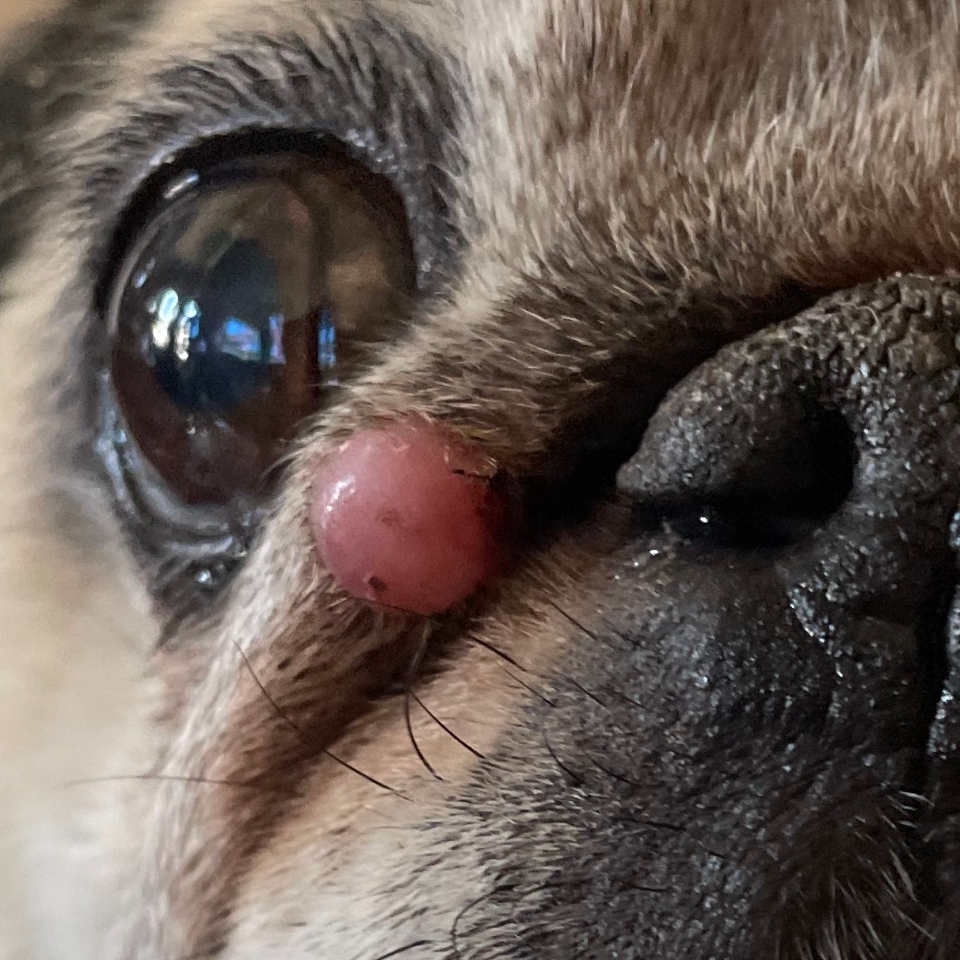
Our veterinarian Dr. Alex Crow explains what cancerous moles may look like:
“Cancerous lumps or lesions are often growing rapidly and tend to have more irregular shapes. Red, black, or generally unhealthy-looking moles are more likely to be cancerous. However, simply looking at a mole won’t tell you if it’s cancerous; you usually need a diagnostic test like a Fine Needle Aspirate or Biopsy to find out for sure.”
A black mole on a dog (rather than white, pink or red) is more likely to be a cancer called melanoma. Some of the more common places where malignant melanoma occurs include the mouth, near the claws, and sometimes within the eye. See picture below or view more pictures of melanomas.

Photo: Ian Brett Spiegel VMD, MHS, DACVD
• True nevi / mole
A small black or brown mole on a dog may be a true nevus. These moles can appear on the face, flank, and paws, as well as other locations. As these lesions are benign, there is generally no need to intervene or provide treatment. However, a vet may discuss sampling the lesion to rule out anything more sinister, such as a melanoma.
When you see a new lump, take pictures right away & call your vet if it doesn’t go away in a few days
Our veterinarians recommend following these steps:
1. Take pictures: When a new bump is noticed, it is a good idea to snap a photo, so you can assess if it is growing or changing over the coming days and weeks. A lump that is changing or growing is more likely to be cancerous.
2. Consider a buster collar if your dog has been licking or chewing at it. It is wise to use a buster collar to prevent this because it will help ensure the lesion does not become infected.
3. Reach out to your vet: A lesion that is not going away after a few days should be examined by a vet. Most of the time, new moles or warts will be something we monitor. Less often, your vet may discuss sampling or removal of the lump, particularly if they are concerned about cancerous tumors such as melanomas or mast cell tumors.
Related post: Pictures of Common Lumps & Bumps on Dogs.
If you’ve only just noticed a small lesion and it is not bothering your dog, you may monitor it over a few days
It could be a small scab or insect sting, which will resolve quickly. It is sensible to consult your veterinarian if the new mole or lesion is persisting for over a week or if it seems to be quickly growing and changing. A consultation should also be booked if a lesion suddenly gets bigger or becomes infected.
Veterinary treatment, costs, and recovery
For many new lumps and bumps, the cost involved may be limited to the consult (about $60-100), as the vet may feel that the lesion is likely benign and needs no intervention. However, it is important to remember that the only way to know this is to sample and test the lesion.
If the mole needs to be investigated, this will be more costly. This can involve a Fine Needle Aspirate ($150-250) or biopsy ($200-400).
Removing a mole may be more costly, as it usually means the pet needs to be under an anesthetic. This can mean a bill of $400-900. This price should include the lab fees for analyzing the growth.
Frequently Asked Questions
Do dogs have moles? Is a mole the same as a skin tag or wart?
When a new skin lesion resembles a mole, owners will inevitably wonder: do dogs have moles? The answer is yes. However, we refer to them as ‘nevus’ (singular) or ‘nevi’ (plural). Some owners and vets, however, will use the word mole interchangeably with skin tag or wart.
What causes the growth of moles or bumps in dogs?
There is likely a large genetic component when it comes to the development of these lesions, but other factors can play a role, too.
- Exposure to sun. Dogs who spend a lot of time in the sun, particularly those who are short-furred, seem more prone to moles and skin tags.
- Weight gain. Dogs who carry more fat than they should can be more prone to developing certain lesions.
- Friction. When skin rubs against itself, especially in places like the armpits and groin, this can lead to skin tags developing.
How can I differentiate between a benign and malignant mole or bump?
There is no definitive way to do this without sampling the lesion and looking at it under the microscope. However, malignant lesions do share certain characteristics, such as being quick to grow, ulcerating, and becoming infected. Learn more: cancerous lesions and bumps.
Can moles or bumps on one dog spread to other dogs or humans?
No, moles cannot spread and are not contagious. Warts (papillomas), on the other hand, can spread from dog to dog.
Disclaimer: This website's content is not a substitute for veterinary care. Always consult with your veterinarian for healthcare decisions. Read More.



Be the first to comment